reactor
Latest
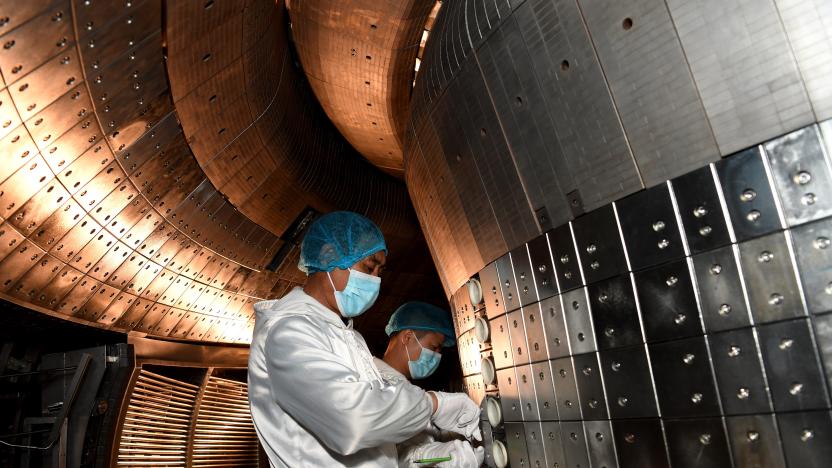
Fusion power is 'approaching' reality thanks to a magnetic field breakthrough
Scientists have made a magnetic field discovery that could help make fusion reactors a practical reality.
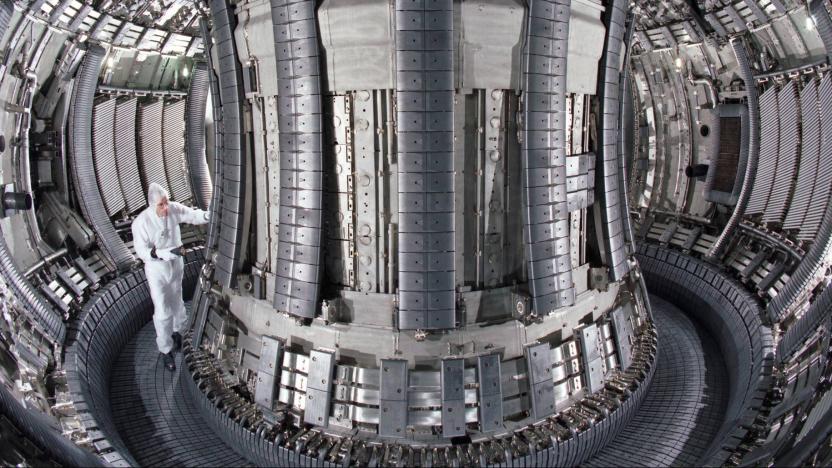
JET nuclear fusion reactor shatters record for energy production
The Joint European Torus (JET) fusion reactor near Oxford in the UK has produced the highest level of sustained energy ever from atom fusion.

Three Mile Island's infamous nuclear plant shuts down after 45 years
An important if ignominious chapter in American nuclear energy has come to a close. Exelon has shut down Three Mile Island's Generating Station Unit 1 reactor after 45 years of use. The reactor isn't the one behind the accident in March 1979, but this effectively marks the closure of the plant -- Unit 2, the reactor that failed, has been dormant for the past 40 years. It didn't directly provide a reason, but it had warned in 2017 that it would shut down the plant in 2019 due to the high running costs.

Devialet shrinks its 'alien egg' speaker (and its price)
Even if you're not already familiar with French audio brand Devialet, you may instantly recognize its Phantom speakers, which are known for throwing a surprising punch from a relatively compact alien egg-like body. The problem is that as impressive as they are, these "implosive" speakers can be a bit too much for tiny spaces, plus prices start from $1,690 which isn't an instant grab for most people. As such, Devialet's team of 100 engineers spent the last three years repackaging the same acoustic technology into a more portable form factor. The result is the Phantom Reactor, a $999 wireless speaker that's four times smaller but still delivers "unreasonable sound."

Microsoft opens a studio for mixed reality
Microsoft has really been hammering home its commitment to mixed reality lately, debuting its headsets earlier this month and holding an entire event dedicated to the concept. Now, and in time for the holidays, the company has launched the Microsoft Reactor in San Francisco, home to its Mixed Reality Capture Studios and Mixed Reality Academy. Here, creative agencies and application developers will be able to invent and create a huge range of mixed reality content, drawing on the thousands of performances the studio has captured over the course of seven years.
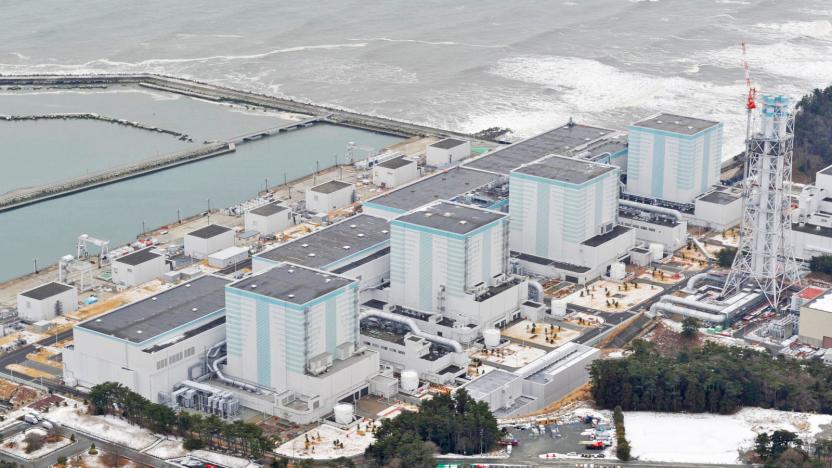
Robot probe no. 2 dies while exploring a Fukushima reactor
The second robot Tokyo Electric Power Company (TEPCO) sent into Fukushima's unit 2 reactor also failed to finish its mission. Earlier this month, the cameras of the first "scorpion" robot that ventured into the reactor malfunctioned after two hours due to extremely high radiation levels. Now, it's the machine's left crawler belt that stopped working (PDF) altogether, forcing TEPCO to cut off its tether and to leave it inside.

Japan axes its 'fast' nuclear reactor prototype
Japan's Monju reactor was supposed to be a more efficient alternative to conventional nuclear power. The "fast," sodium-cooled prototype plant would produce more plutonium than it ate up, making it relatively easy to recycle fuel. However, that's not how it worked out. A leak and fire led to a 15-year shutdown starting in 1995, and the reactor has been plagued by failures, mismanagement and political fights ever since. And now, the government has had enough: it's planning to close Monju once and for all. It would be slower and more expensive to fully restart the reactor than to shut it down (the equivalent of $4.6 billion versus $3.2 billion), officials claim, and the focus is on developing more practical fast reactors instead.

Fusion reactor endurance record hints at our energy future
Wondering why a fusion reactor isn't powering your home right now? There are numerous reasons, but one of the biggest is simply keeping the necessary super-hot plasma in an ideal state for energy generation -- it doesn't last that way for long. South Korea, however, just edged closer to that goal. The country's KSTAR (Korean Superconducting Tokamak Advanced Research) reactor team claims to have set an endurance record for operating with "high performance" plasma. The feat only lasted for 70 seconds, but that's still a "huge step forward," according to the National Fusion Research Institute.
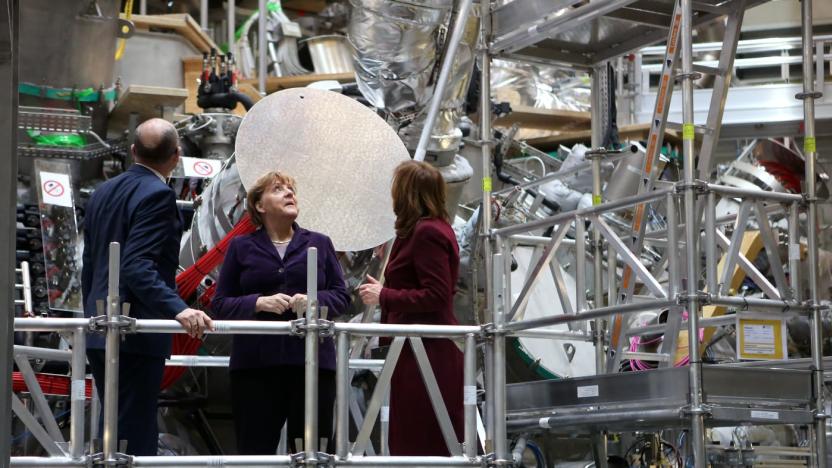
Twisty fusion reactor goes online after 19 years of work
Germany just took fusion power one big, important step forward. The country's Max Planck Institute for Plasma Physics has just switched on Wendelstein 7-X, the first large fusion reactor based on a twisty stellarator design. It's only producing hydrogen plasma at the moment and won't actually generate energy, but power isn't really the point. Instead, it'll serve as proof that stellarators could provide energy while operating continuously, unlike current (tokamak-based) fusion reactors that operate in short pulses. They should be safer, too.

Twisty reactor hints at a future of practical fusion power
Many fusion reactors are based on a tokamak design, which uses an electrical current to twist a superheated plasma's electrons and ions into a three-dimensional loop. That's good for containing the plasma, but it's still not the safest design -- if the current fails or there's a magnetic disruption, you have a serious problem on your hands. However, scientists at the Max Planck Institute may have a more practical alternative. They've recently completed Wendelstein 7-X, the first large reactor based on a stellarator concept that relies on a cruller-like shape for the twisting action instead of a current. That's considerably safer than a tokamak, and the supercomputer-guided design should iron out the containment problems that have plagued stellarators until now.

Researchers developing reactor powered by nuclear waste
Nuclear energy could have curbed C02 emissions long ago if not for one problem: the waste is toxic for over 100,000 years. That's quite a commitment for humanity, but Hitachi thinks it has the answer: burn the spent fuel in small reactors to generate more power. That would produce manageable waste that would be harmless in a mere century or so. Hitachi has been studying such reactors for awhile with GE, and has enlisted MIT, the University of Michigan (U-M) and University of California, Berkeley (UCB) for the next phase. The goal is to re-purpose existing boiling water reactors (RBWRs), so that their turbines, safety systems and other components could be reused. Researchers could then focus on the core tech needed to burn highly refined "transuranium elements," aka spent nuclear fuel. They've enlisted the three schools to jointly analyze the safety and performance of potential core designs, with the aim of eventually building a test reactor. Commercialization is probably decades off, but the way toxic waste is building up, they may want to hustle it along.
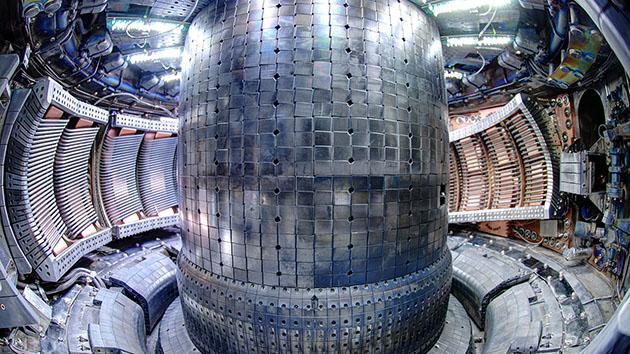
MIT reactor gets a second shot at producing unlimited clean energy
Nuclear fusion is the holy grail of scientists (and politicians) as it could produce limitless free energy without nasty consequences like meltdowns and radioactive waste. Though nobody's been able to build a reactor that produces more energy than it consumes (except arguably one time), scientists are still trying, with three experimental reactors currently in operation in the US. One of those, however, has been in the Obama administration's cross-hairs: MIT's Alcator C-Mod reactor. The White House decided to chop that program back in 2012, calling it too small, outdated and a vanity program for MIT, according to the Boston Globe.

EVE Evolved: The Siphon Unit in Rubicon
EVE Online will soon let players steal valuable resources from each other, and not everyone is happy with it. The upcoming Rubicon expansion will add a new Siphon Unit structure that can literally siphon off materials from a starbase's moon harvesters and simple reactors. Preliminary details on the structure were released in a new devblog this week, sparking debate over whether the new item will be a useful tool for disrupting entrenched nullsec alliances. Many expected the siphon to be a minor annoyance to starbase owners, with the presence of a siphon being easily discovered and a limit of one siphon per starbase established. In reality, one siphon unit can rob a starbase of 60% of the output from a moon harvester or 12.5% from a simple reactor, and there's no limit to how many can be stacked on an individual starbase. It'll take only two of these to completely shut down a single moon-mining operation, and the owner will get no warning whatsoever that it's happening. In this week's EVE Evolved, I look at how the Siphon Unit will work, its stats, various ways to protect your starbase from it, and what the long-term implications may be for EVE.

Delaware Ph.D. student hopes to solve energy woes with renewable hydrogen production
Hydrogen fuel is a fickle mistress. On one hand, it teases us with the promise of renewable energy and a cleaner tomorrow. On the other hand, it's most often produced with natural gas as the source -- hardly the clean break from fossil fuels that many had envisioned. Fortunately, there are other methods to harness this abundant element, and a doctoral student at the University of Delaware may have created a worthwhile process. Similar to previous research we've seen -- which relies on ceric oxide and energy from the sun -- Eric Koepf has designed a reactor that combines zinc oxide powder, solar rays and water to derive hydrogen as a storable energy source. Most intriguing, it's thought that the zinc oxide byproduct from the reaction will be reusable -- a potential gateway to sustainable energy. Koepf will spend the next six weeks in Zurich at the Swiss Federal Institute of Technology, where his reactor prototype will be put through its paces to determine its efficiency and effectiveness. If successful, his advisors envision that one day, we may see giant versions of Koepf's reactors producing hydrogen on an industrial scale. We certainly won't fault them for dreaming big.

Microsoft manager teams up with teens to build a fusion reactor in his garage (video)
Normally, if a grown man talks about building a fusion reactor and wants your 13-year-old to hang out in his garage, we'd expect you to smile, back away slowly, and perhaps alert the authorities. But, if that man is Microsoft program manager Carl Greninger there's no need to run. The science fanatic recruited a team of teens, as young as 13, and worked with them to build a Farnsworth–Hirsch Fusor -- a (comparatively) simple nuclear reactor that smashes together atoms and produces neutrons. Check out the nearly 20-min video after the break to watch a bunch of high school kids generate ball of ionized plasma. And to think, all that's in your garage is that '65 Mustang you swear you're gonna restore one day.

New solar machine could generate hydrogen fuel, food for your future vehicle
We're hesitant to file this one in the folder marked "Awesome Things That'll Never Happen," but it's definitely on the watch list. A new prototype solar device has been concocted to convert sunlight into fuel, much in the same way a plant does. Eco-minded folks will probably understand that conventional photovoltaic panels "must use the electricity they generate in situ," and thus, cannot deliver energy at night; this here device takes a rather unorthodox approach, using the sun's rays along with ceria (a magical, marvelous metal oxide) to "break down carbon dioxide or water into fuels which can be stored and transported." In theory, at least, the device could be used to create hydrogen and / or carbon monoxide, with the former being obviously useful for fueling up hydrogen-based cars of the future. Sadly, the existing prototype is horribly inefficient -- only around 0.7 percent of the solar energy can be converted into fuel -- but researchers are adamant that they can boost that to nearly 20 percent in time. We'll check back in a decade or so to see how things are progressing.

Corsair Nova, Reactor SSDs now available
Well, it didn't exactly seem like these were nearing an imminent release when they were introduced earlier this month, but Corsair has now pulled a pleasant surprise and announced that its new Nova and Reactor SSD drives are available right now. As expected, the Reactor series comes in 60GB and 120GB varieties and uses the Micron JMF612 controller with 128MB of DDR2 memory, while the Nova boasts 64GB or 128GB capacities and uses an Indilinx Barefoot controller with 64MB of cache memory. Speeds are not drastically different between the two, but the Nova does have a slight edge, with the 128GB model coming out on top at 270MB/second read and 190MB/second write. Prices range from $185 for the 60GB Reactor to $375 for the 128GB Nova.

Corsair readying Nova and Reactor 2.5-inch SSDs for release
Corsair has kept quiet on the SSD front here recently, but it looks as if it's about to ruffle a few feathers with two new laptop-centric drives. Fudzilla has dug up pricing information on two heretofore unreleased solid state drives from the company, with the 64GB / 128GB Nova and 60GB / 120GB Reactor both featuring the Indilinx Barefoot controller, MLC NAND and at least 64MB of cache. The Nova series is purportedly capable of hitting read speeds of up to 215MB/sec on both the V128 and V64, while write speeds are locked at 130MB/sec for the V64 and 195MB/sec for the V128. As for the Reactor range? Those feature 128MB of cache and a nice boost in transfer speeds, though the €151 ($206) starting tag doesn't do much for bargain shoppers. Hit the source link for more details, but don't get your hopes too high for a near-term release in the US.

Hardcore Computer bringing oil submersion cooling to the masses
Dousing your gaming rig in oil is a technique we've seen from custom shops before, but not quite like the offerings from Minnesota-based start-up Hardcore Computer. Its Reactor line of submerged gaming rigs, shipping to real, live customers in about a month, use custom enclosures to dunk everything from the CPU to the SSDs in a blue-dyed, non-conductive concoction that we hope is mineral oil (it doesn't break down and go rancid like canola). A pump circulates the liquid through a side-mounted radiator for cooling while all the wet components slide out of the top for potentially mess-free maintenance. You can get your choice of Core 2 Extreme processors, up to 8GB of DDR3 memory, and even three GeForce GTX 280 GPUs stacked right on top of each other if you have the bank. Prices start at about $4,500, which isn't as bad for a crazy setup like this, with a well-spec'd, triple-SLI machine coming in just under $10k. We'd certainly call that hardcore -- despite the gushy center.Update: It looks like Maximum PC spent some time soaking in this one and posted some early impressions and a bunch more pics. As it turns out the goo inside isn't blue after all; it's just lit-up that way. [Thanks, Havok and Jamie]

Reactor Never Dark watches glow for ten years
Watches with tritium illumination elements have been around for a while, and although they glow for a long time, they're much dimmer than traditional phosphorescence solutions, which are extremely bright but tend to fade quickly. Reactor's new Never Dark line goes for the best of both worlds, with an extremely bright phosphorescent compound called Superluminova backed up by tritium illumination. According to Reactor, the Superluminova can recharge instantly with even the smallest exposure to light and the tritium remains illuminated for up to ten years. You probably have bigger problems than punctuality if you've been in the dark for ten years, but people expecting the unexpected can also expect to fork over $300-$450 for the Reactor Trident, the first Never Dark watch.[Via Sci-Fi]










